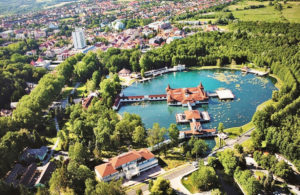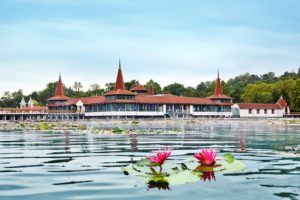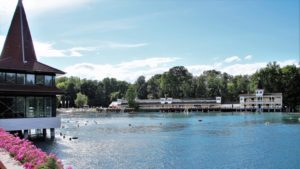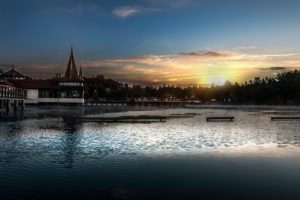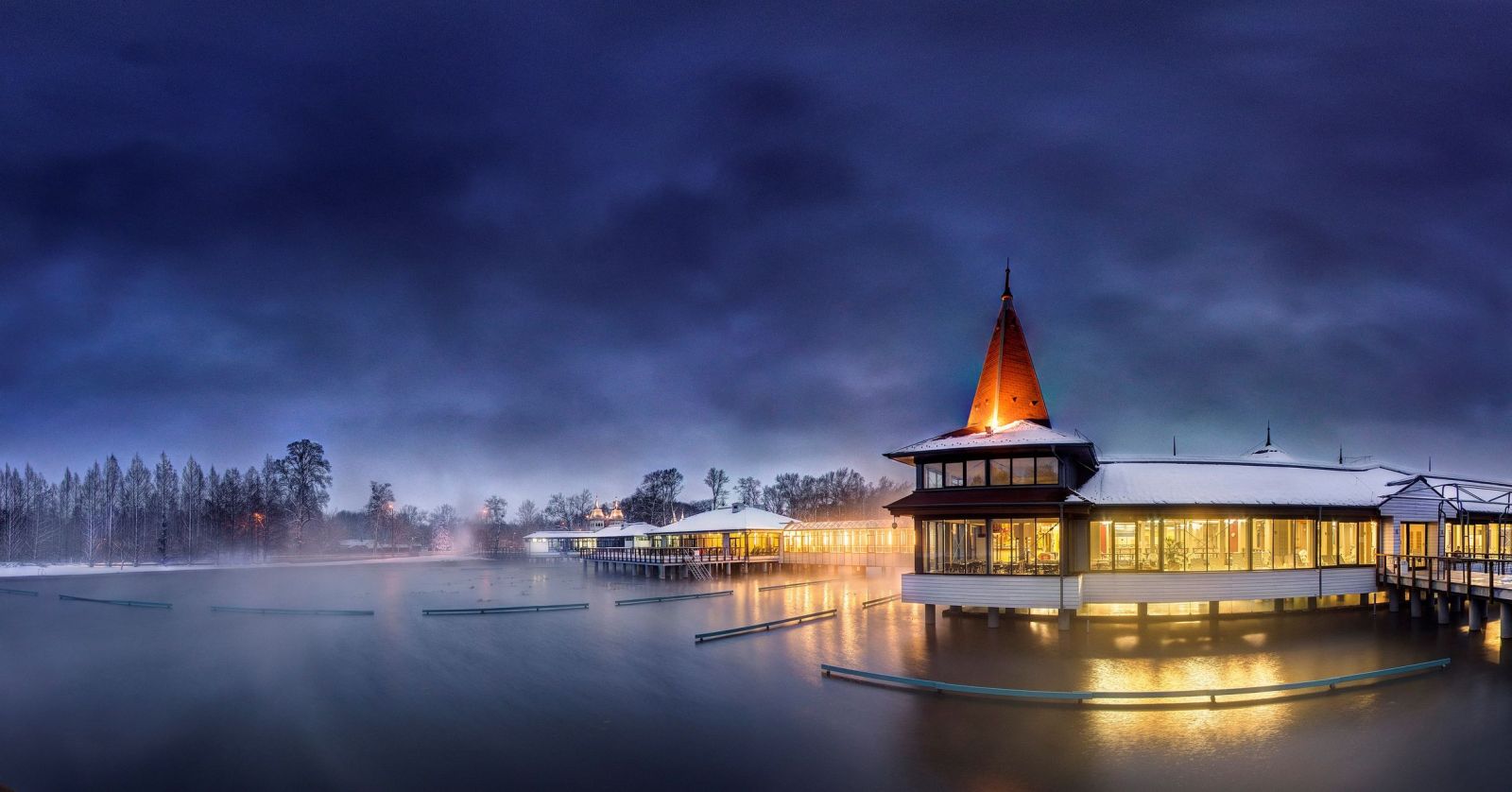
Thermal Lake Hévíz
The largest natural thermal lake in Europe
The thousands years old thermal lake is fed by a source of mineral springs, cold and warm, from a spring-cave 38 metres deep in peat. The lake surrounded by a park was first built up in Hévíz in 1772 and the first bathhouse was built here at that time, although the locals probably knew the medical effects of the water and used the lake for bathing in the Middle Ages, too.
Apart from the calming, yet refreshing effect of water, even the water flow acts as a gentle massage for the bather. Due to its unique environment, its wildlife is very special and the water lilies (Nymphaea), which blooms even in the late fall offer a beautiful view.
Services of the Lake Bath
There are several wellness, recreation and spa services are available for guests in the bath:
- – aromacabin
- – infrasauna and Finnish sauna
- – steam room
- – ice bath
- – salt cave
- – jacuzzi
- – kneipp pool
- – massage
- – cosmetology (beauty) treatments
Healing composition of the water
In summer the water temperature moves around 33-35 °C, during the hotter days it can reach 36-38 °C. In autumn and winter, the temperature of the lake decreases, it is around 24-26 °C.
The composition of the water was already studied by scientists at the end of the 18th century, but only later in the 1950s was the exact composition determined. Experts found that the water of the thermal lake contains calcium, magnesium, and sulfur. The medical water also has a slight radon content. A unique nature of the thermal water can be experienced due to its biological activity because of high presence of organic compounds in it.
Positive effects of the thermal water in Hévíz
The positive effects of the lake’s water were mentioned firstly in the Middle Ages: according to a certificate from Zala County, the “diverging steamed water of the lake is very suitable for skin care and the settlement near the lake is called Gouty Village” (Köszvényes).
The therapeutic effects of the lake bath are shown in the following cases:
- – Rheumatoid musculoskeletal disorders
- – Inflammatory joint and spine diseases
- – For connective tissue rheumatoid arthritis
- – In the case of secondary joint diseases, metabolic disorders associated with joint complaints (eg gout) or disorders of internal-secretion glands
- – Arthritis associated with skin diseases
- – Fractures, accident injuries, post-musculoskeletal conditions (primarily fractures) in rehabilitation
- – Chronic peripheral nervous system injuries due primarily to mechanical causes
- – Pre- and post-treatment of joint surgery in case of discontinuous surgery
- – For chronic gynecological diseases
